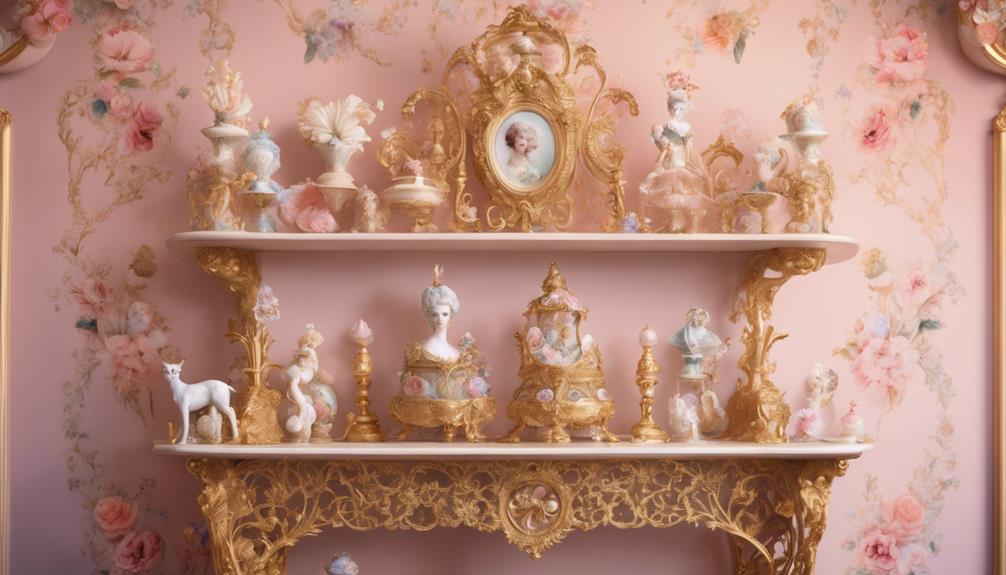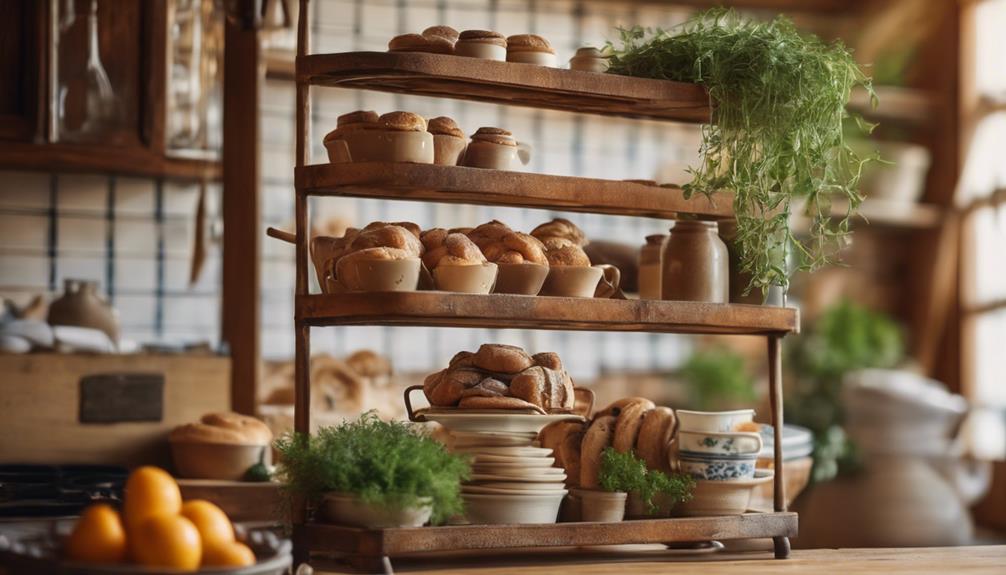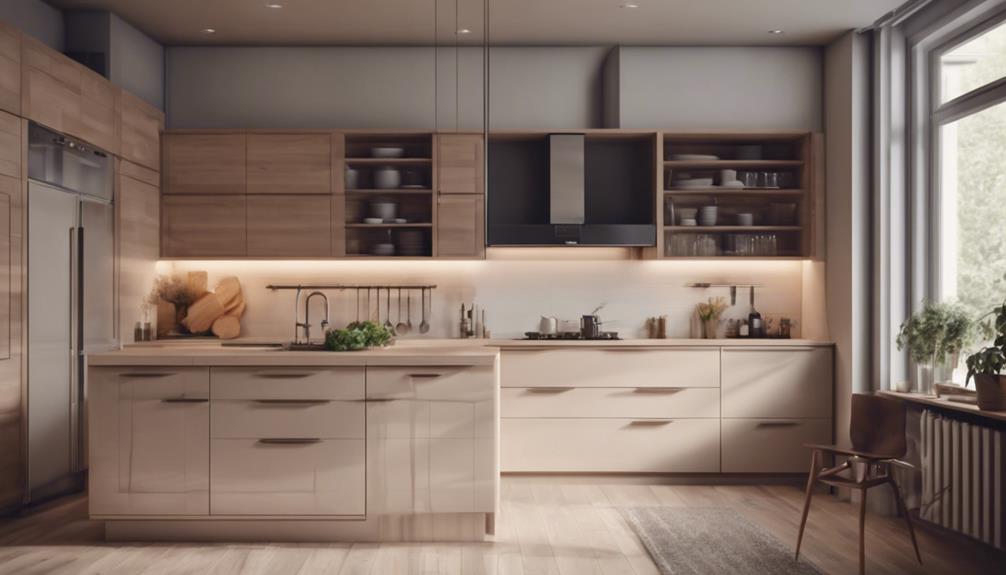Looking to jazz up your decor with a touch of color and charm? Chindi fabric is the perfect choice to add that extra pop to your living space. Handmade by skilled artisans using vibrant fabric strips, this unique textile showcases artistry and sustainability. Chindi rugs are crafted from upcycled cotton scraps, making each piece one-of-a-kind and durable. With easy-care properties for simple maintenance, these rugs provide a sustainable and stylish addition to any home. Explore the world of Chindi fabric for a blend of tradition and modern design that will elevate your decor effortlessly.
Key Takeaways
- Chindi fabric is made from recycled cotton scraps, adding sustainable charm to decor.
- Vibrant colors and intricate craftsmanship make chindi textiles visually appealing.
- Ideal for adding a unique pop of color and texture to various decor styles.
- Handmade chindi rugs are durable, long-lasting, and easy to maintain.
- Chindi fabric promotes sustainability, reduces waste, and supports ethical production.
Origin and History of Chindi Rag Rugs
Chindi rag rugs have a rich history originating in India centuries ago, where households creatively repurposed old clothing into vibrant and unique pieces of decor. These rugs were handmade by sewing together fabric scraps, resulting in colorful and eclectic designs that became popular for their sustainable nature.
In India and globally, Chindi rag rugs gained recognition for being environmentally friendly and showcasing the artistry of the makers. Women in rural areas often crafted these rugs both to generate income and to exhibit their creative talents. The process involved in making Chindi rag rugs includes sorting, cutting, braiding, and weaving fabric strips to create one-of-a-kind pieces of functional art.
This traditional practice not only adds a pop of color to your decor but also carries a legacy of sustainability and craftsmanship that has stood the test of time.
How Chindi Rag Rugs Are Made
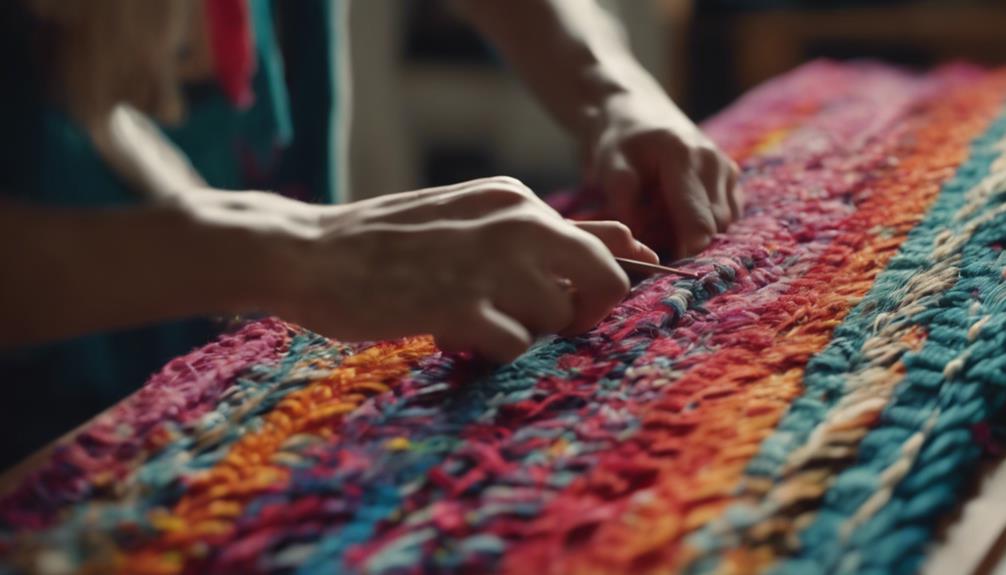
When crafting Chindi rag rugs, artisans sew together colorful fabric strips, creating unique designs that add vibrancy to your space.
The production process involves sorting, cutting, and weaving fabric scraps with meticulous attention to detail.
The result is a labor-intensive, eco-friendly decor piece that showcases the artistry and craftsmanship of the makers.
Production Process
To create Chindi rag rugs, artisans meticulously sew together colorful strips of recycled cotton fabric in a traditional weaving process. The recycled fabric is sorted by color, cut into uniform lengths, and then braided or woven into rugs, showcasing vibrant designs.
This eco-friendly production method not only repurposes materials but also results in durable and stylish home decor pieces. The patchwork style of Chindi rag rugs adds a touch of uniqueness to each rug, making them one-of-a-kind additions to your space.
While the process of making Chindi rugs is labor-intensive due to the intricate handcrafting involved, the end result is a beautiful and sustainable product that brightens up any room. By combining creativity with recycled materials, artisans bring to life these intricate and colorful rugs that not only enhance your decor but also contribute positively to the environment.
Artisanal Craftsmanship
Skilled artisans in India handcraft Chindi rag rugs by meticulously weaving together recycled cotton fabric strips in a vibrant and eco-friendly process. The process begins with sorting fabric scraps by color, which are then cut into strips and intricately braided or woven to form these unique rugs. By utilizing recycled cotton, Chindi rugs offer a sustainable option for home decor, effectively reducing waste and promoting eco-conscious living.
The labor-intensive artisanal craftsmanship involved in making Chindi rag rugs results in durable pieces known for their vibrant colors and handmade charm. Each rug is a one-of-a-kind creation, adding a personal touch and a pop of color to any room in your home.
The popularity of Chindi rugs continues to grow due to their distinctive look and the sense of artistry brought by skilled artisans. Opting for Chindi rag rugs not only enhances your decor but also supports traditional craftsmanship and sustainable practices.
The Popularity of Chindi Rag Rugs

You'll love how Chindi rag rugs are becoming a go-to choice for adding charm and color to homes.
Their handmade nature brings a unique flair that can't be replicated by mass-produced pieces.
The versatility of these rugs makes them a popular option for various decor styles and settings.
Chindi Rug Appeal
Chindi rag rugs have captured the attention of interior decorators meaningfully and homeowners alike for their vibrant hues and unique charm. These handcrafted rugs aren't only a colorful addition to any room but also bring a sense of individuality due to their one-of-a-kind nature.
The versatility of Chindi rag rugs allows them to seamlessly fit into various decor styles, from traditional to modern, adding a burst of color wherever they're placed.
The vivid colors found in Chindi rag rugs make them ideal for brightening up neutral spaces or complementing existing decor schemes. Their eco-friendly and sustainable qualities also make them a popular choice among those seeking enduring and environmentally conscious home decor options.
Additionally, the durability of these rugs ensures that they can withstand everyday wear and tear while still maintaining their vibrant appeal. Consider adding a Chindi rag rug to your home for a touch of color and charm that will last for years to come.
Colorful Eco Decor
Adding a vibrant Chindi rag rug to your space not only infuses color but also contributes to the eco-conscious decor trend, making it a popular choice among homeowners and interior decorators.
These rugs are crafted from upcycled fabric remnants, showcasing colorful and distinctive designs that add a personal flair to any room.
The handcrafted nature of Chindi rag rugs guarantees longevity, making them perfect for frequently used areas in your home. Their thickness and sturdy quality set them apart from other types of rugs, offering a sustainable and environmentally friendly option for decorating.
Whether your style is traditional, rustic, modern, or eclectic, Chindi rag rugs can elevate the aesthetic appeal of any space.
Advantages of Chindi Rag Rugs
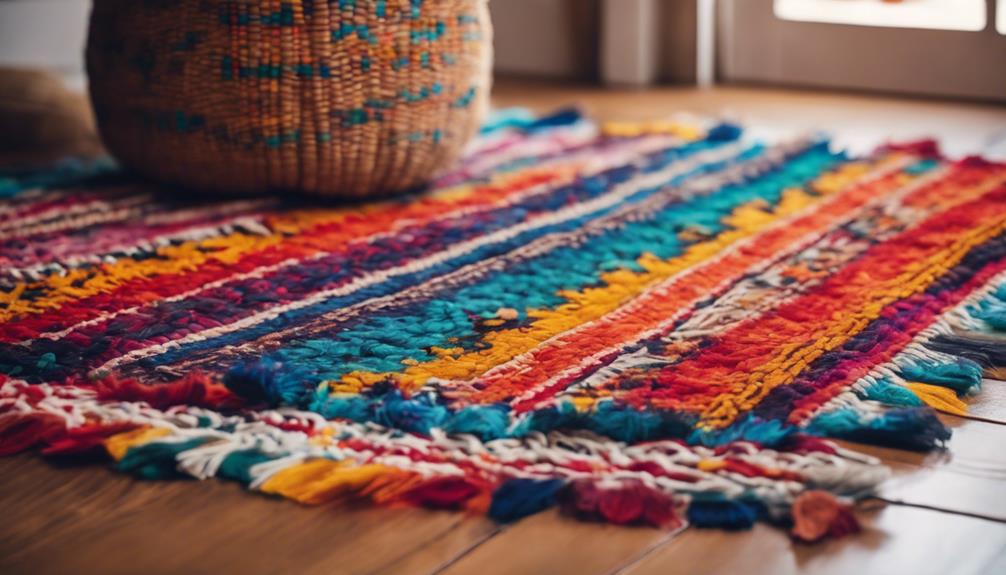
Crafted from upcycled cotton fabric scraps, Chindi rag rugs offer a sustainable and vibrant addition to your decor. These rugs aren't only eco-friendly but also present a beautiful patchwork design that adds a burst of color to any room.
Their unique handcrafted nature ensures that each piece is one-of-a-kind, enhancing the overall aesthetic of your space. In addition to being visually appealing, Chindi rag rugs are durable and long-lasting, making them ideal for high-traffic areas in your home.
Their easy-care properties further contribute to their appeal, as they're simple to clean and maintain, saving you time and effort. By integrating a Chindi rag rug into your decor, you not only enhance the style of your space but also make a conscious choice towards sustainability.
Make a statement with these practical, environmentally friendly rugs that blend seamlessly with various decor styles.
Chindi Rag Rugs in Modern Design

To maintain up with contemporary interior trends, consider how Chindi rag rugs in modern design can enhance your decor with their vibrant colors and unique, handcrafted appeal. These rugs aren't just floor coverings; they're statements that breathe life into your living spaces. Here are some features that make Chindi rag rugs a must-have for modern interiors:
- Pop of Color: Chindi rag rugs burst with vibrant colors, adding an instant lift to any room.
- Fabric Strips: Handwoven from recycled fabric strips, each rug tells a story of sustainability and creativity.
- Handmade: The intricate craftsmanship of these rugs guarantees each piece is unique and adds a touch of artisanal charm.
- Recycled Fabrics: By repurposing old fabrics, Chindi rag rugs contribute to a more sustainable and eco-friendly decor.
- Vibrant Colors: The lively hues of Chindi rag rugs make them versatile pieces that can complement a variety of design styles.
Incorporating a Chindi rag rug into your modern design scheme not only enriches your decor but also demonstrates your dedication to style and sustainability.
Sustainability of Chindi Rag Rugs

Incorporating Chindi rag rugs into your decor promotes sustainability through the use of recycled cotton fabric scraps. These rugs are not only eco-friendly but also support ethical production methods by repurposing materials that would otherwise go to waste. By choosing Chindi rag rugs, you are making a conscious decision to reduce environmental impact and embrace a more sustainable lifestyle.
| Sustainable | Recycled Cotton Fabric | Eco-Friendly |
|---|---|---|
| Supports sustainability | Repurposes fabric scraps | Reduces environmental impact |
| Promotes ethical production | Prevents waste | Supports eco-friendly lifestyle |
| Embraces sustainable practices | Minimizes resource use | Fosters environmentally conscious choices |
| Reduces textile waste | Supports recycling | Contributes to a greener planet |
| Aligns with eco-friendly trends | Upholds sustainable values | Prefers repurposed materials |
Buying Authentic Chindi Rag Rugs
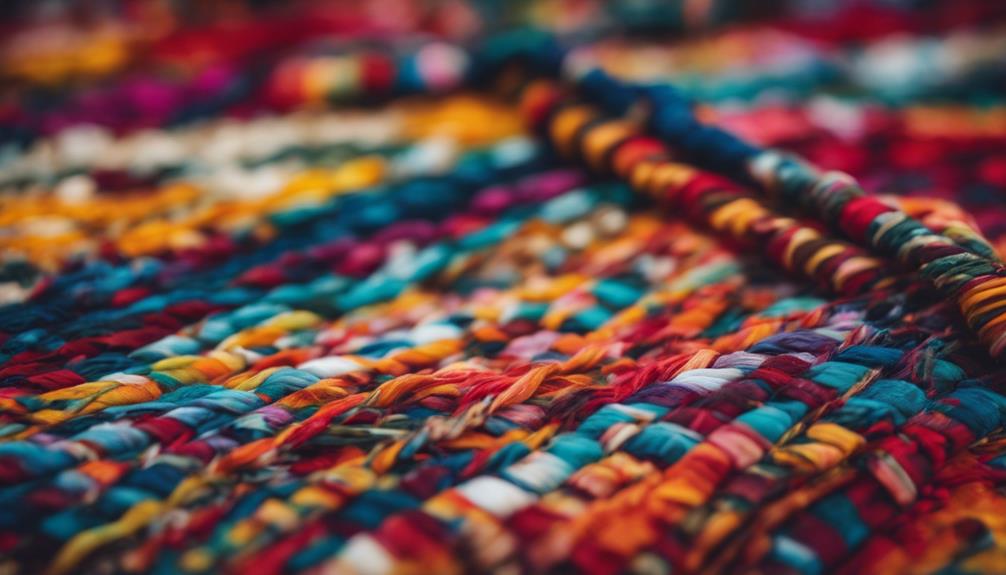
When seeking out authentic Chindi rag rugs, prioritize handwoven pieces crafted from recycled cotton fabric strips for a genuine addition to your decor. These rugs aren't only visually appealing but also environmentally friendly, making them a sustainable choice for your home.
Here are a few factors to keep in mind when purchasing authentic Chindi rag rugs:
- Look for handwoven Chindi rag rugs made from recycled cotton fabric strips for an eco-friendly option.
- Authentic Chindi rag rugs feature a colorful patchwork design, adding a unique touch to your space.
- These rugs are ideal for high-traffic areas such as living rooms and entryways due to their durable construction.
- Opt for Chindi rag rugs that are soft and comfortable underfoot, providing both style and practicality.
- By choosing authentic Chindi rag rugs, you not only enhance your decor but also support sustainable practices in the textile industry.
Where to Find Chindi Rugs

Looking to enhance your space with vibrant colors and unique designs? Chindi rugs might be the perfect addition to your decor! These handcrafted rugs are made in India using recycled fabric scraps, creating an eco-friendly and stylish choice for your home. You can find Chindi rugs in a variety of places, including home decor stores, online retailers, and artisan markets.
To help you locate the perfect Chindi rug for your space, here's a guide to where you can find them:
| Location | Description | Benefits |
|---|---|---|
| Home Decor Stores | Look for a wide selection of Chindi rugs in various sizes and colors. | Convenient shopping experience. |
| Online Retailers | Explore a vast range of Chindi rugs from the comfort of your home. | Access to unique designs from different sellers. |
| Artisan Markets | Discover one-of-a-kind Chindi rugs directly from the artisans who make them. | Support traditional craftsmanship and artists. |
Conclusion
So next time you're looking to add a pop of color and texture to your decor, consider incorporating Chindi fabric into your home.
While some may argue that Chindi rag rugs are too traditional for modern design, their versatility and sustainability make them a timeless addition to any space.
Don't miss out on the opportunity to elevate your home with the unique charm of Chindi fabric.


